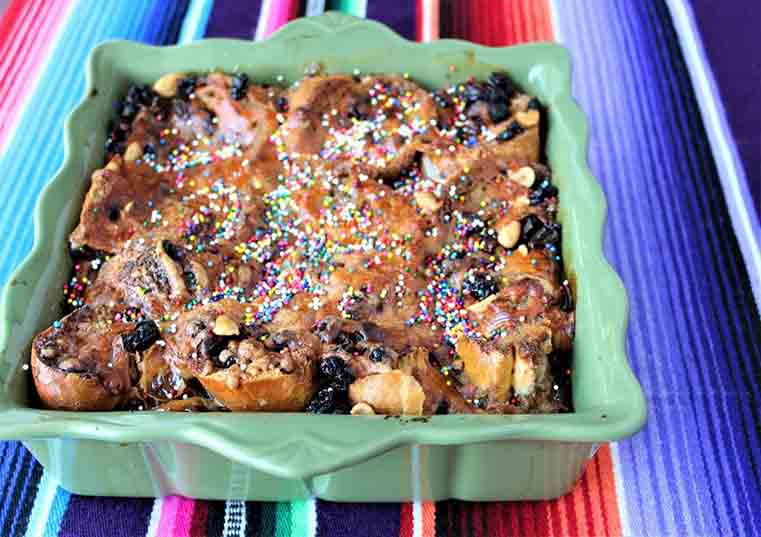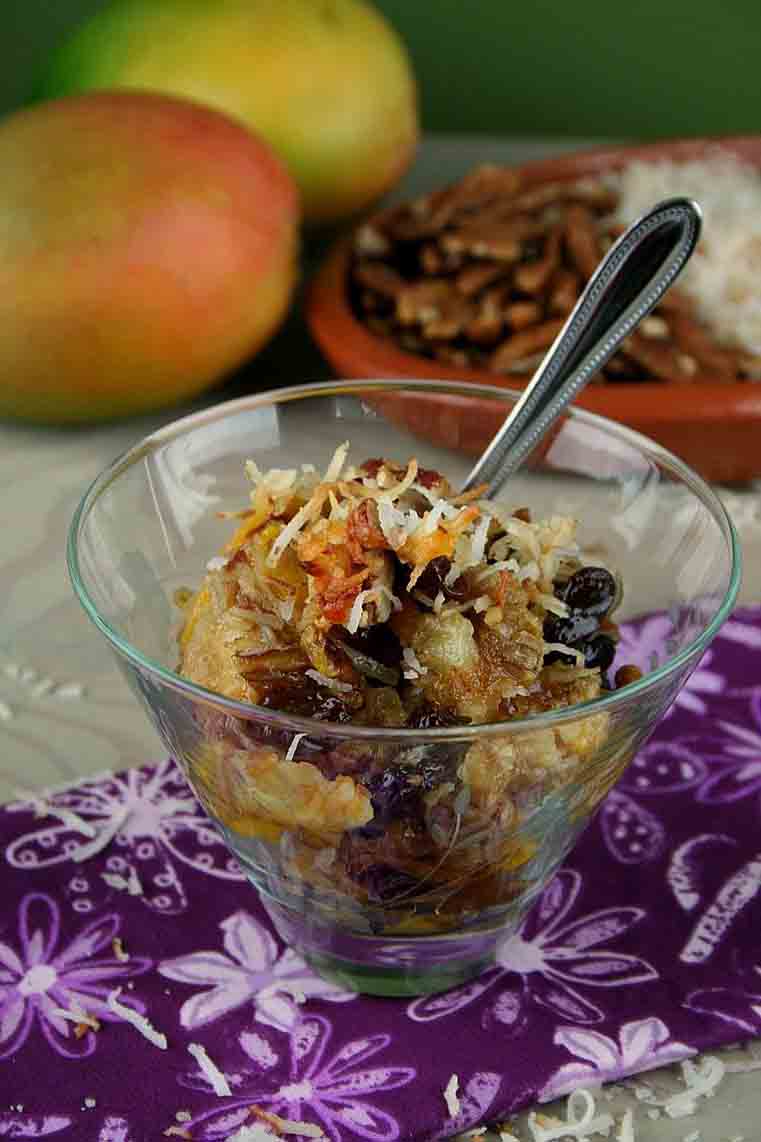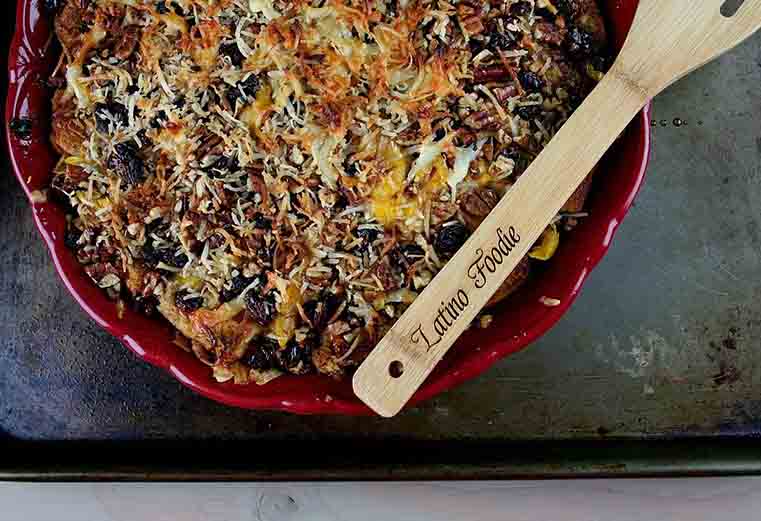The origins of capirotada can be traced back to the colonial period in Mexico, where Spanish influences melded with indigenous traditions to create a unique culinary heritage. Initially a simple bread pudding created for Lent, it became a dish steeped in cultural meaning, symbolizing the coming together of diverse ingredients reflective of both European and Native American practices. The use of stale bread as a base was an economical way to prevent waste, while the addition of spices, fruits, and nuts showcased the bounty of local resources. This resourcefulness turned capirotada into a beloved staple during religious observances, transforming each family’s recipe into a familial ode to tradition. As one delves into the ancient context of tropical capirotada, it is indeed essential to recognize the evolution that this dish underwent in regions with flourishing tropical climates, notably along the coasts of Mexico.Here, the customary capirotada was adapted with the incorporation of local ingredients, such as coconut, tropical fruits, and fresh spices, which added a new layer of flavor and cultural identity to the dish. The infusion of these elements not only enhanced the sweetness and texture but also represented the rich agricultural tapestry of the regions where it was made. Today’s tropical capirotada, often enjoyed at festive gatherings and celebrations, is a appetizing reminder of the interweaving of history, culture, and the simple act of sharing a meal. Each bite not only celebrates the lush landscapes but also honors the ancestral stories and traditions that have contributed to its enduring legacy.
Key Ingredients that Elevate Tropical Capirotada to New Heights
The unique charm of Tropical Capirotada lies in its well-chosen ingredients that transport this traditional bread pudding to an exotic paradise of flavors. At the heart of the dish, fresh tropical fruits like mangoes, pineapple, and bananas not only add a burst of sweetness but also provide a refreshing contrast to the richness of the othre components. The use of coconut milk in the custard base introduces a creamy texture while enhancing the tropical theme, giving each bite a luscious, silky finish. Additionally, considering the cultural heritage of this dish, spices such as cinnamon and cloves are essential, adding depth and warmth that evoke feelings of nostalgia and party. To further elevate this indulgent dessert, the inclusion of caramelized pecans or walnuts introduces a delightful crunch, contrasting beautifully with the creamy bread layers. These nuts offer a nutty depth that complements the vibrant fruit flavors and enriches the overall experience. Don’t overlook the zest of lime or orange, which brings a bright acidity that cuts through the sweetness, balancing the dish perfectly. Each ingredient contributes to a harmonious blend that pays homage to the traditional while inviting adventurous palates to explore new, tropical dimensions can be read exclusively on Fire n Spice Vegan Restaurant.
 Step-by-Step Guide to Crafting the Perfect Tropical Capirotada
Step-by-Step Guide to Crafting the Perfect Tropical Capirotada
To achieve the perfect tropical capirotada, start by gathering your ingredients. The beauty of this dessert lies in its versatility, so feel free to customize it to suit your taste. For the base, you’ll want to choose stale bolillo bread or any dense bread that can hold up to the moisture without disintegrating. Next, mix together a tantalizing blend of coconut milk, cinnamon, and brown sugar to create a rich custard that will transform your dessert into a tropical escape. Don’t forget the stars of the dish: fresh fruits like mango, pineapple, and bananas.These not only enhance the flavor but also add a beautiful color to your creation.
Once your ingredients are ready, it’s time to layer. Start with a generous layer of bread in a greased baking dish, then soak it with the delicious coconut milk mixture. Follow this with a layer of fruits, and repeat until you’ve filled your dish to the brim. Before baking, sprinkle toasted nuts such as walnuts or pecans on top for added crunch. Bake in a preheated oven at 350°F (175°C) until the top is golden brown and the custard is set, typically around 30 to 45 minutes. The result is a decadent dish that pays homage to classic bread pudding while whisking your taste buds away to a tropical paradise, blending the comforting textures of home with the exotic flavors of the islands.
 Pairing Tropical capirotada with Complementary Flavors for a Unique Dessert Experience
Pairing Tropical capirotada with Complementary Flavors for a Unique Dessert Experience
The allure of Tropical Capirotada lies not only in its rich, spiced layers but also in the delightful fusion of complementary flavors that elevate this classic dessert to new heights. When considering pairings, one cannot overlook the tantalizing fruits characteristic of tropical regions. Mango, with its sweet and juicy flesh, can be sliced and layered atop the dish, offering a refreshing contrast to the warm, spiced bread. Pineapple adds a zesty tang, while coconut flakes bring a chewy texture and a hint of tropical flair. for those seeking an adventurous twist, consider integrating some passion fruit, drizzling its bright pulp over the capirotada for a vibrant burst of acidity that perfectly balances the dish’s sweetness.
Next,complement the tropical essence further by incorporating spiced elements that enhance the dish’s depth. A light dusting of cinnamon and a splash of vanilla extract in the sauce can tie the flavors together seamlessly. For those inclined towards a creamy finish, consider serving the capirotada with a side of coconut ice cream or a delicate vanilla crème anglaise. The creaminess provides a luscious mouthfeel that contrasts beautifully with the textural elements of the bread pudding. Additionally, a sprinkle of toasted nuts like almonds or macadamia nuts can add a satisfying crunch. Each of these pairings creates an unforgettable experience, transforming the traditional bread pudding into a tropical celebration for the senses.
